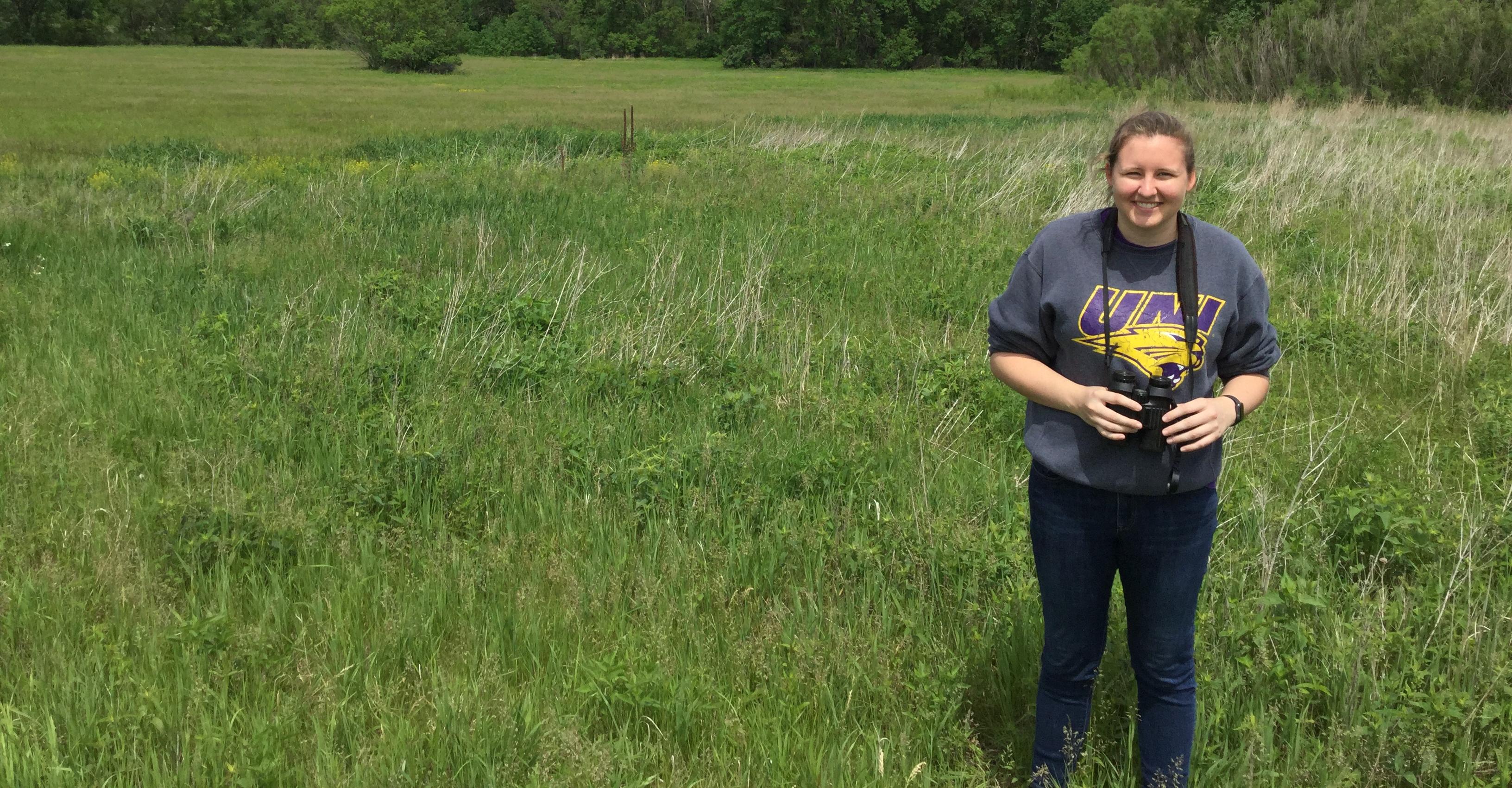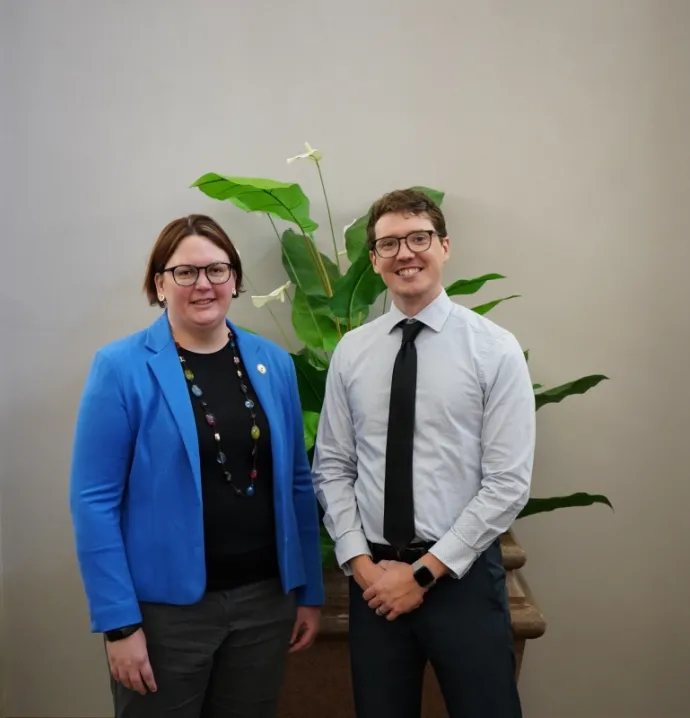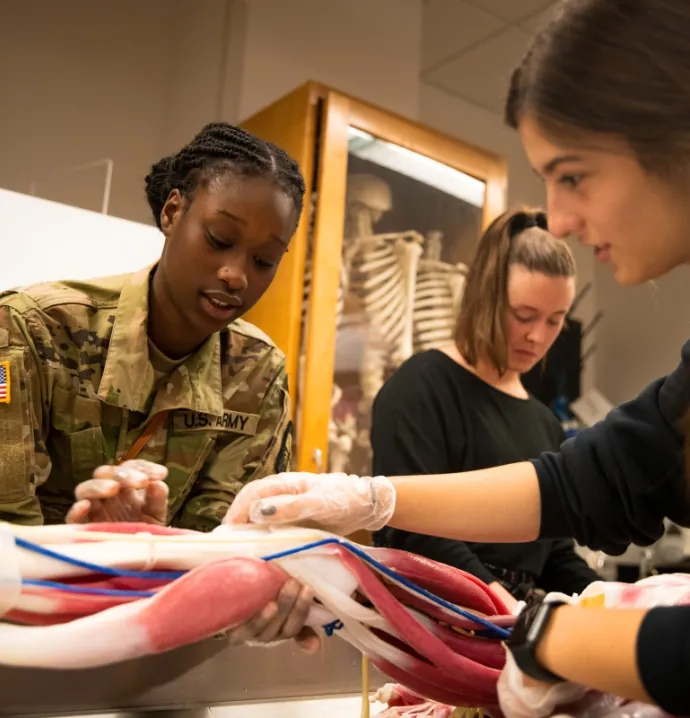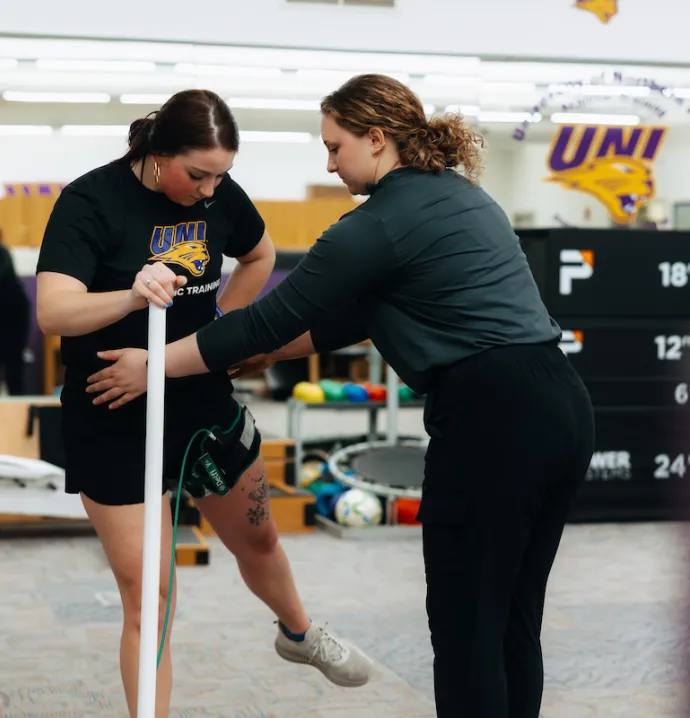Biology graduate student journeys 7,200 miles across rural Iowa to help expand natural vegetation
Biology graduate student journeys 7,200 miles across rural Iowa to help expand natural vegetation
After adding to her 400-pages of datasheets, Gretchen Steffensmeier, a UNI biology master’s student, drives on to her next destination in a 7,200 mile mission across Iowa’s farmland as part of a federally funded conservation research program.
Steffensmeier’s fascination with native grasses originates from her high school environmental science class, where her instructor, a UNI alum, spoke highly of the prairie studies he did at UNI. Steffensmeier received her undergraduate degree from UNI in 2021, double majoring in biology and environmental science and minoring in chemistry and neuroscience, which Steffensmeier jokes makes her a “big science nerd.”
It was thrilling for Steffensmeier, an undergraduate at the time, to work with the USDA Conservation Reserve Program at UNI’s Tallgrass Prairie Center. She wanted to continue studying natural vegetation after receiving her B.S. so she looked into UNI’s biology graduate program, hoping for an advisor passionate about Iowa’s native plants. “The stars aligned and there was a faculty member who was studying the Conservation Reserve Program, which was right up my alley.” The faculty member was Dr. Kenneth Elgersma. So she enrolled in the graduate program to continue her prairie research.
She began field work for her thesis during the first semester of her graduate program, evaluating land enrolled in the Conservation Research Program (CRP). The CRP is a federally funded, billion-dollar per year program paying farmers to forgo planting row crops and replacing them with perennial vegetation. The program incentivizes farmers to plant native vegetation like prairie grass. Steffensmeier’s thesis advisor, Dr. Elgersma, noted that it is “a large federal program that offsets farmers' costs and provides compensation to landowners who plant perennial grassland to reduce runoff and soil erosion, and provide habitat for wildlife.” These contracts are 10 to 15 years, but the CRP lacks the resources to monitor all the fields.
Steffensmeier is part of a team who travels to those sites to understand how landowners are managing them and the implications of that management. “A huge amount of money–in the neighborhood of 400 million dollars a year–comes into Iowa through this program” said Elgersma. The team measures two things: whether landowners have managed the fields based on their condition, and how different plant species respond to this management. She is particularly interested in how common milkweed distribution is impacted by this management because milkweed attracts monarch butterflies.
Much of her field work consisted of roadside vegetation surveys. “These vegetation sites needed to be within 25 meters of a road. So I could see them without trespassing on people's property” said Steffensmeier. Between June and August she traveled across Iowa in a university car, paying for travel expenses with a grant.
“The most rewarding part for me was traveling by myself for two weeks when I had never traveled independently before,” said Steffensmeier.
She recorded her field data and observations on datasheets and has started analyzing it this year. “I think she's doing some really interesting and impactful research evaluating land enrolled in the USDA Conservation Reserve Program. I think we will learn a lot from this research, and I'm really happy with the work Gretchen is doing,” said Elgersma.
Gretchen Steffensmeier





